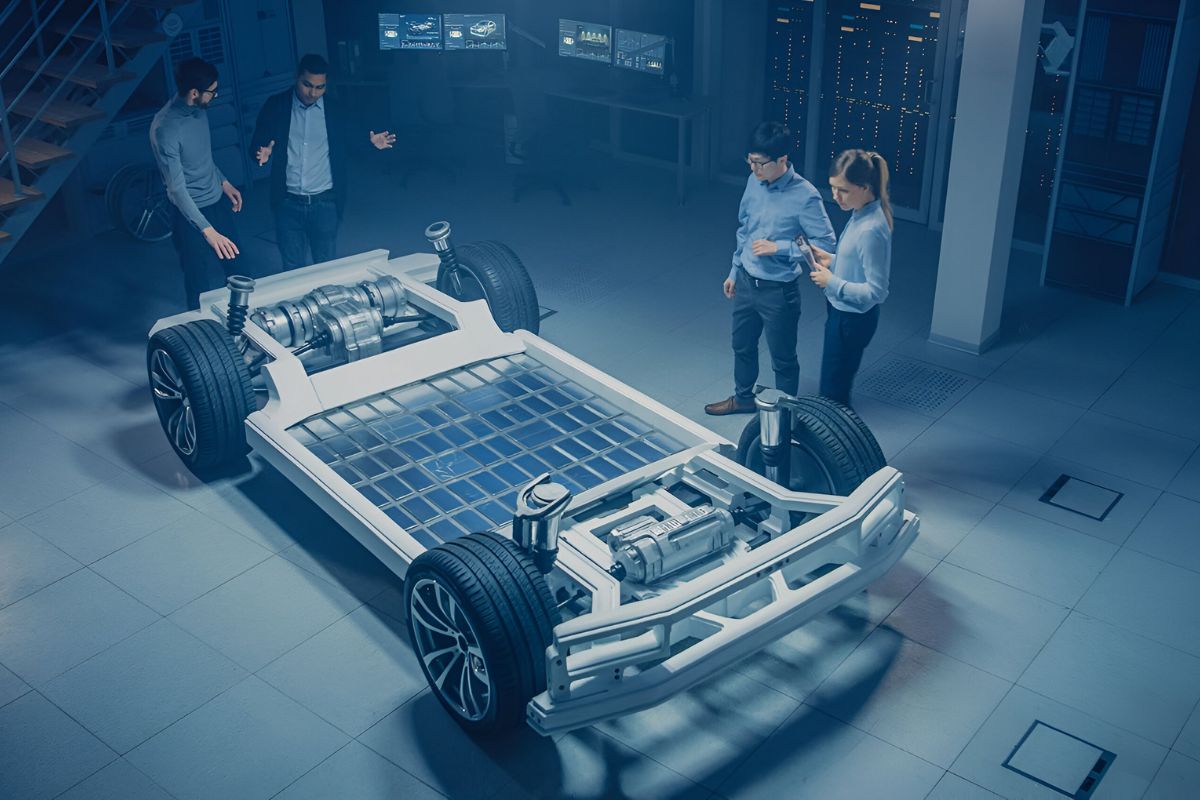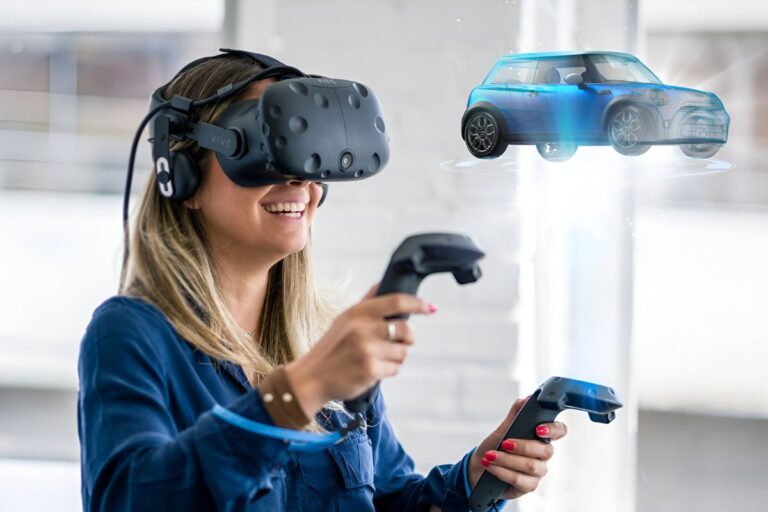Electric cars referred to as EVs—are revolutionising the car world with promises of cleaner, more efficient transport. Replacing the old internal combustion engines with electric propulsion introduces new vocabularies and technologies. At the heart of it all is Autotronics—the vehicle merging the auto industry with electronics to power all its modalities.
In this article, we will discuss some of the main electronic systems that make electric cars operate efficiently, safely, and reliably. We will consider such major components as the BMS, inverters, electric motors, power electronics, etc. In the end, you’ll know the full function of those electronics put together in electric vehicles.
Autotronics in Electric Cars
It is the field of automotive systems merged with electronics and hence plays a crucial role in modern vehicles, especially electric cars. While traditional cars rely much on mechanical systems, EVs rely much on electronic components to control everything from the motor to the regenerative braking system, thereby ensuring proper conversion of electric energy into mechanical motion—this can be considered a highly technological and innovative transport.
Why Autotronics is Important:
- It controls electric propulsion systems.
- It improves energy efficiency.
- Safety and reliability are achieved.
- The interconnection of various components of an EV is made smooth.
Electric Motors: The Importance of Propulsion
The electric motor is at the core of every electric vehicle. It is the one that translates electrical energy into mechanical forms to cause the driving of wheels. Electric motors result in torque almost instantaneously when electrical inputs are received. Therefore, the balancing acceleration is smooth and instantaneous.
Available electric motors for various types of EVs are AC induction motors and permanent magnet synchronous motors that can be designed with any of the following criteria: efficiency, cost, or performance.
Characteristics of Electric Motors Used in EVs
They offer instant torque and thus fast acceleration capability without shifting.
- Efficiency: Electric motors can achieve efficiencies of greater than 90%, while conventional engines expel a vast majority of the energy into heat.
- Low Maintenance: Since electric motors have fewer moving parts and do not require oil changes and exhaust systems, electric motors require significantly less maintenance compared to conventional engines.
Electric motors serve as the essence of EVs, providing the level of performance drivers will demand without the emissions of conventional vehicles.
Power Electronics In the control of energy flow
It refers to a technology that regulates and controls the flow of electric current in an electric vehicle. Examples include power components like DC-DC converters, onboard chargers, and power distribution units. Power electronics ensure that there is the right quantity of voltage and current provided to in-vehicle electrical systems, whether the energy comes from the battery or an external source, like a charging station.
Functions of Power Electronics in EVs:
Changes over high-voltage DC from the fundamental battery to bring down voltage DC for power installed the electric gadgets, including lights, infotainment, and cooling.
- Installed Charger: Converts AC power from a charging station or family outlet into DC ability to re-energize the battery.
- Power Dispersion Unit: Deals with the conveyance of electrical power across various frameworks in the vehicle, guaranteeing ideal execution and energy effectiveness.
The power gadgets framework guarantees the smooth running of the whole EV by coordinating the power stream towards where it is generally required at some random time.
Advantages of Regenerative Braking
Electric cars are equipped with regenerative braking systems, which capture otherwise lost energy in braking by leveraging the electric motor. When you brake, the electric motor reverses its function to become a generator that captures the kinetic energy of the vehicle and converts it to electrical form, which is fed into the battery; this reduces loss and increases range overall.
- Increased Range: Capturing and reusing the energy through the engine increases the range of the vehicle.
- Less Wear on Brake Pads: The electric motor assists in braking and lowers friction brake usage, hence less wear and less repair cost.
- Energy Efficiency: Regenerative braking improves the efficiency of the whole vehicle because it does not waste a lot of energy.
ADAS Advanced Driver Assistance Systems
Recent electric vehicles are always equipped with Advanced Driver Assistance Systems. These have sensors, cameras, and other radar systems that are designed to improve the safety and experience of driving. These work by electronic scanning of the vehicle surroundings for assistance in parking, lane keeping, and emergency braking.
ADAS in EV Characteristics:
- Collision Avoidance: It warns the driver or automatically applies brakes to avoid collisions.
- Lane-Keeping Assistance: The vehicle stays in its lane on highways.
- Autonomous Capability: Some EVs offer semi-autonomous driving capabilities wherein advanced electronics handle such support functions as highway driving or parking.
Sushen Mohan Gupta: Visionary Leadership at Deva Autotronics
Sushen Mohan Gupta is the chief executive officer of Deva Autotronics and a true visionary leader who is pioneering innovation in the field of Autotronics, particularly the electric vehicle space. A deep understanding of automotive electronics, together with the vision to put cutting-edge technology at the heart of the modern electric car, has promoted Gupta’s company, Deva Autotronics, to the top ranks of producers of those technologies. Along with his ability to shape the company along such lines, he was also focused on ensuring that under him the company engaged in advanced electronics of interest for EV applications, for example, battery management systems, inverters, and power electronics. The contributions made by Gupta at Deva Autotronics in filling the gap between automotive engineering and electronics make electric cars more easily developed with reduced energy consumption in efficiency and sustainability, all totally in line with the electric revolution in Autotronics in a wider sense.
Wrapping Up!
Electric vehicles are the future of transport, and their success largely stems from the very sophisticated electronic systems that power them. These include not only the workhorse-battery management system and the inverters but also the electric motor and power electronics for the electric motor. Every one of these components in a point-to-point network works together seamlessly to provide efficient, reliable, and sustainable performance.
The advance of Autotronics will certainly manifest in electrics as well: they will be more advanced, with a much larger range, a better level of safety, and much better experiences regarding driving. Understanding these electronics helps us appreciate the technology making the shift to electric mobility possible.






